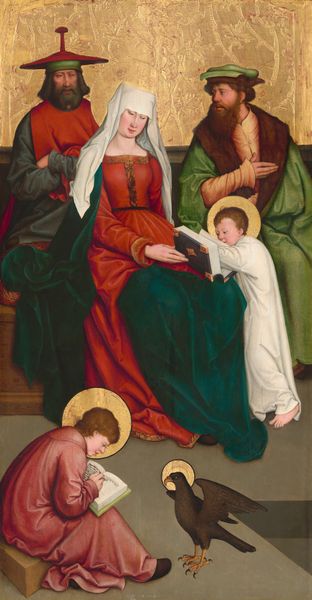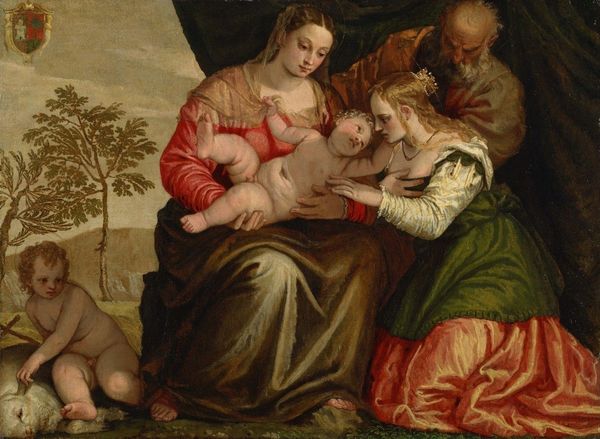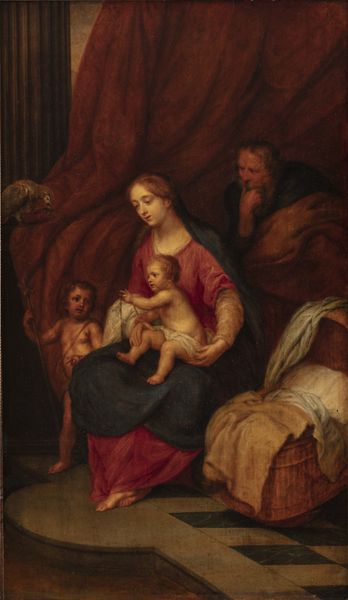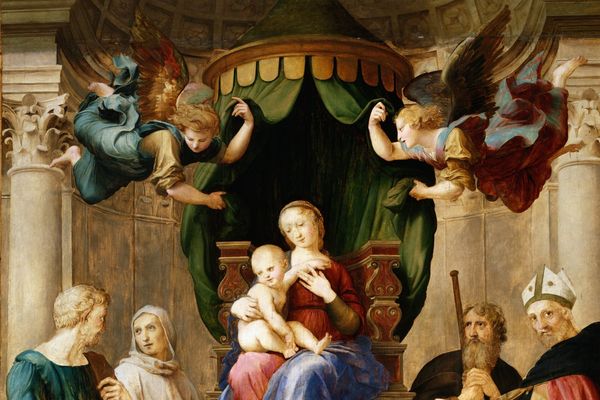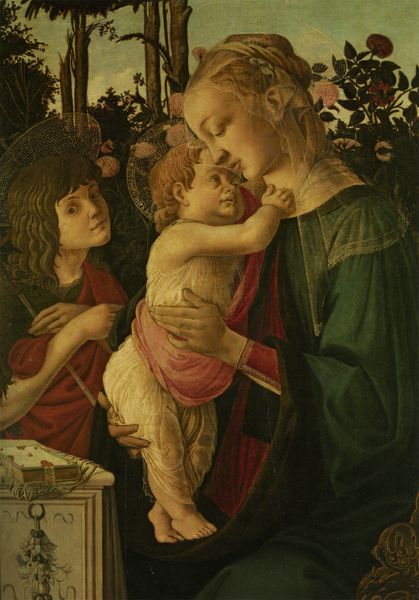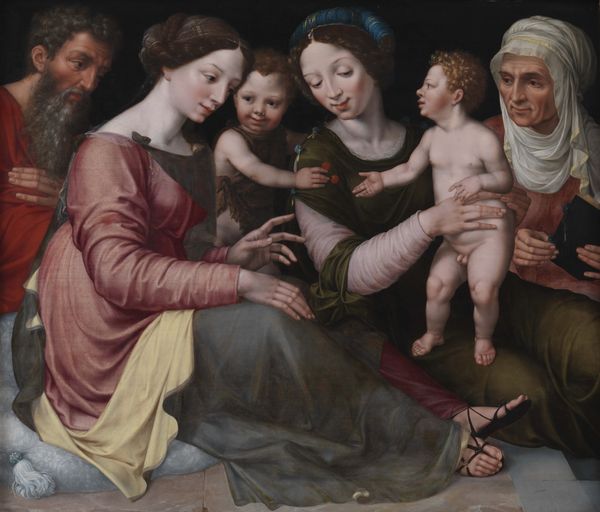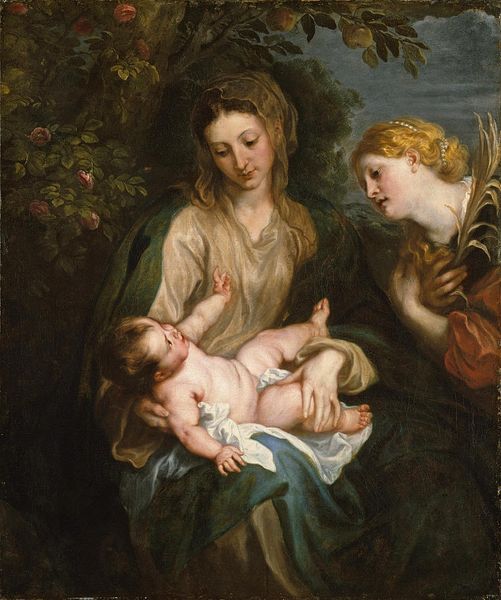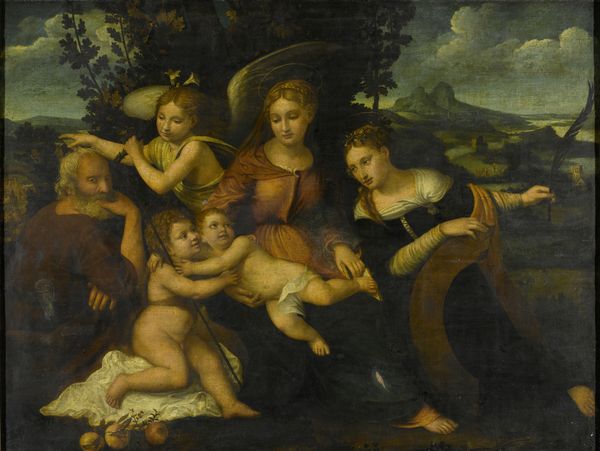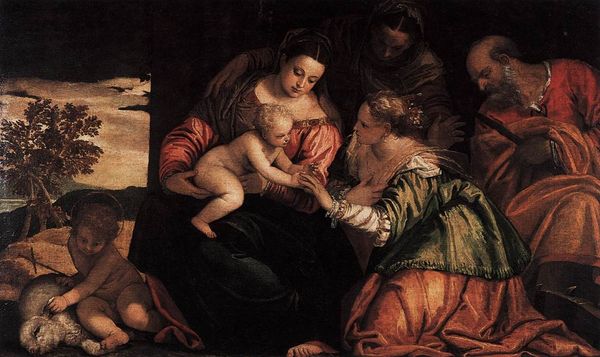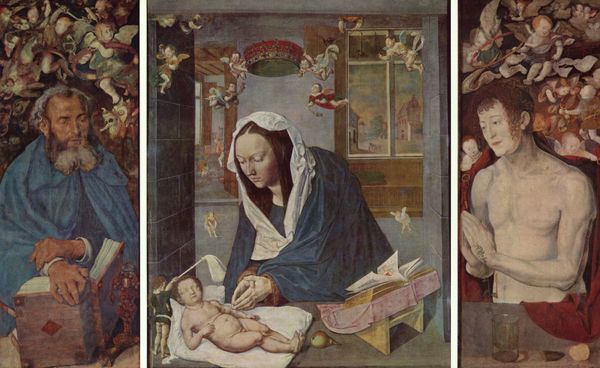
panel, oil-paint
#
portrait
#
panel
#
oil-paint
#
oil painting
#
underpainting
#
history-painting
#
italian-renaissance
#
portrait art
Dimensions: overall: 125.5 x 65.8 cm (49 7/16 x 25 7/8 in.)
Copyright: National Gallery of Art: CC0 1.0
Curator: Let's turn our attention to Bernhard Strigel’s panel painting, “Saint Mary Cleophas and Her Family,” likely completed between 1520 and 1528. Editor: My first impression? A feeling of solemn domesticity—that tightly packed group, the subdued palette… It’s intimate and somehow monumental at once. Curator: Strigel was working during a pivotal time, absorbing influences from the Italian Renaissance, even as the Reformation was brewing. This painting reflects both—the classicizing figures, yes, but also a very Northern European focus on familial piety. Mary Cleophas, traditionally understood to be a relative of the Virgin Mary, embodies this role of the holy matriarch. Editor: Absolutely. Structurally, the composition feels incredibly deliberate. Look at how the artist uses the figures' arrangement to create a pyramid, drawing the eye upwards toward Mary and her family members standing behind her. And consider that restrained palette—mostly earth tones, with only a few pops of vibrant red. Curator: And let's consider that tension inherent in the painting, those halos hovering above the children's heads, juxtaposed with a domestic scene with a child being attacked by a dog! We could read the painting as commenting on how children, particularly boys of this status, were trained in religious and masculine duty to grow into defenders of faith or face earthly violence. Editor: Indeed, that dramatic struggle is impossible to ignore. It injects a dynamism into an otherwise quite still composition. Semiotically, it invites many interpretations. The young boy is literally combating his worldly limitations represented by the aggressive dog. Curator: But don't let’s forget this piece serves a distinct purpose, both historically and socially. For the elite who commissioned the painting, it may have also validated social class and provided viewers with a template of expected roles: pious mother, defender of the faith. Strigel navigates the complexities of religion and family life. Editor: Ultimately, by focusing on form, we recognize a tightly structured composition that reinforces the content. What might seem like simple family scene speaks volumes through the structure of the work. Curator: Yes, placing “Saint Mary Cleophas and Her Family” in conversation with both its period of creation and subsequent understandings allows for broader narratives focusing on gender, race, and political status, offering the contemporary viewer insight and understanding.
Comments
No comments
Be the first to comment and join the conversation on the ultimate creative platform.
